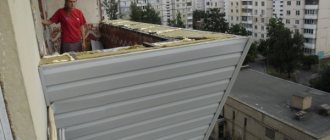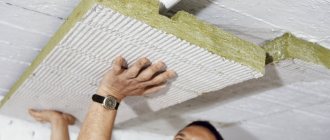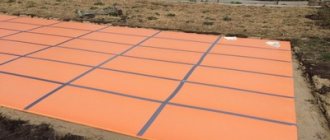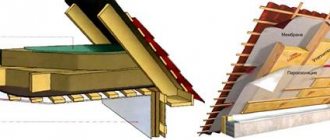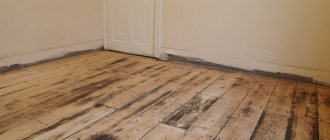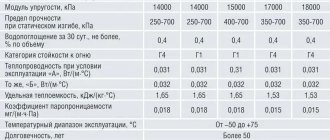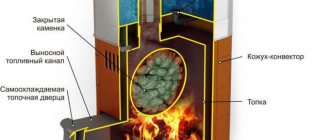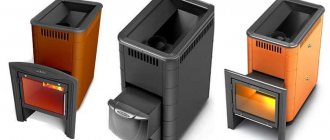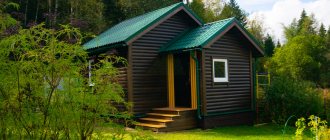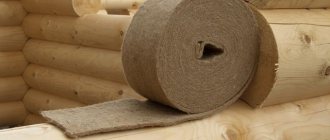Insulation
Date of publication: 11/23/2015
0
10686
- Materials you can use
- Styrofoam
- Mineral wool
- Ecowool
- Glass wool
- Liquid insulation
- Foil material
- What rules must be followed
- What to look for when choosing a material
Anyone who has decided to engage in frame construction understands that a lot depends on insulation. And here a number of questions arise: what insulation to choose, how to insulate it, is it worth insulating the floor or ceiling additionally, or paying special attention to the walls? If we are talking about the construction of a frame bath, then it is extremely important not to make a mistake, since this room is subject to the influence of high humidity and large temperature changes. Therefore, when insulating a frame bath, you must approach the process with full responsibility. A mistake can result in you getting constantly damp walls that are completely unable to retain heat. Insulation can be done with your own hands.
DIY bath frame
How to insulate a frame bath?
When choosing a suitable insulation for a bath, you should pay attention not only to the heat-insulating properties of the material in question, but also to the ability to withstand significant temperatures and high humidity levels.
In addition, when calculating the insulation of a frame bath with your own hands, it is worth considering that heat-insulating materials for baths should not emit toxic substances when heated . Some relaxation of the requirements for fire safety and environmental friendliness can be made only for those insulation materials that will be used for exterior finishing.
In construction practice, it is customary to use several types of materials to improve the thermal insulation of baths .
- Mineral wool boards . This material is formed by thin fibers obtained from the melt of either rocks or waste from the metallurgical industry. Since when a huge number of such fibers are intertwined, a significant amount of air remains between them, such slabs acquire excellent thermal insulation qualities.
- Reed slabs . This natural material is attractive for its environmental friendliness, as well as good thermal insulation qualities. The thickness of such slabs is 15 cm, which is very convenient when constructing frame walls.
- Sawdust-gypsum mixture . This insulation is made by mixing 10 parts of carefully dried sawdust with 1 part of gypsum or cement. The main advantage of this option is low cost coupled with good thermal insulation.
- Polystyrene foam, polystyrene foam, polyurethane foam and other foamed synthetic materials . The advantages of foamed synthetics include the following:
Moreover, since inorganic substances have a very high melting point, mineral wool slabs formed with their use successfully withstand even the most intense heat without losing their performance qualities. For the same reason, such slabs do not collapse and do not lose their heat-saving properties from the high humidity that is inevitable for any bath.
- low cost;
- light weight;
- ease of cutting the material and its installation;
- low thermal conductivity, guaranteeing excellent thermal insulation;
- immunity to moisture.
However, all types of foamed synthetic insulation cannot be used on those structural elements of the bathhouse where exposure to high temperatures is likely. Therefore, they are used only for insulating bath walls located at some distance from the stove (washing compartment, dressing room, rest room).
Video about insulating a frame bath.
Properties of bath stones. You will read about this and much more about bath stones in our next article. And this article tells you how to insulate a bathhouse from the inside.
Characteristics of natural types of insulation
Wood fiber insulation is one of the most popular building materials used for thermal insulation of a bathhouse. The basis of the material is wood fibers knitted using synthetic fibers. This material has anti-allergenic properties and does not cause irritation on the skin of the hands during work. The production of this natural heat-insulating building material is carried out by recycling wood materials. This type of heat-insulating building material has the ability to absorb and release moisture, which allows the walls to breathe, so baths built using this building material behave like structures built from logs or timber. The most popular material related to wood fiber insulation is ecowool, the cost of which is about 120 rubles per 1 kg.
The disadvantage of this building material is its high moisture absorption, which, if there are errors in the installation of ventilation, leads to the fact that high humidity is retained in the material and contributes to the appearance of mold inside the walls, and they rot.
Basalt wool is another popular thermal insulator. For its production, mineral fiber is used, held together with an adhesive composition. The main advantages of such a heat insulator are the following:
- high heat-saving characteristics;
- basalt wool does not burn;
- service life is at least 20 years without loss of quality characteristics;
- high degree of sound insulation;
- does not absorb moisture and does not retain it.
The disadvantage of basalt wool is the release into the surrounding atmosphere of a small amount of formaldehyde vapor from the adhesive used in the production of building materials.
Insulation based on flax fiber began to be used relatively recently. The material is produced by pressing. The heat insulator does not contain additives that can release harmful compounds. Mats made from flax fiber are able to absorb and release moisture from the air well, and also perfectly conserve heat indoors.
The disadvantage of the material is that mice can get in it, which leads to loss of properties. Sawdust can be used as a natural material for insulating a frame bath.
Protecting thermal insulation from moisture
Regardless of what material was chosen as a heat insulator for the walls of the bathhouse, in the process of filling the cells of its frame it will also be necessary to equip a reliable vapor barrier . Without cutting off the insulation from the humid bath atmosphere, its material will condense water from the cooling steam. And this is fraught with the most negative consequences.
Firstly, wet insulation will significantly increase its thermal conductivity, which will mean a rapid loss of heat from the premises into the environment. Secondly, the porous insulator will dry for quite a long time. This can lead to mold and rotting of the bathhouse frame.
Therefore, during the construction of walls, the heat-insulating material should be sheathed with high-quality vapor barrier, for which the following can be used :
- aluminum foil, which can not only protect the insulation from moisture, but also reflect heat;
- glassine, which is low cost and environmentally friendly;
- polyethylene film.
You should not use the once popular roofing material in a bathhouse, since when heated it can emit an unpleasant odor, plus working with this material is not particularly easy.
When laying a vapor barrier, it is necessary to ensure that there are not even tiny gaps left . You can ensure tightness either using metallized tape or by overlapping adjacent panels.
Installation work for insulating bath walls
The insulation of a frame bathhouse with your own hands begins along with the construction of the walls of the structure, since when using this construction technology, the insulation also serves as a structural material. In this case, layers of heat insulator are laid out between the load-bearing elements of the bathhouse frame, followed by laying a vapor barrier layer on top of them.
As a result, a kind of pie is formed, in the central part of which there will be insulation, lined with vapor barrier on the inside and waterproofing on the outside. The outer layers will be formed by decorative cladding inside the bathhouse and façade cladding on the outside. In this case, the cladding will serve as both an additional thermal protection line and a structural element that increases the strength of the entire structure.
The best option is to lay two layers of thermal insulation into the bath frame . Moreover, it is desirable that one layer is formed by tiled insulation, and the second by roll insulation. This solution is guaranteed to get rid of cracks. When laying insulation, you should pay attention that many materials have an internal and external side, which the manufacturer’s instructions will help you distinguish.
Thermal insulation of the wall next to the stove
On the steam room side, the partition will need to be sheathed with a vapor barrier, and a material with low thermal conductivity will be laid on top of it. This may be cladding made of hardwood. To secure it, it is recommended to install wooden blocks in the upper and lower parts of the partition.
Laying a brick partition
First, using a hammer drill, make holes in the walls along the line of the intended fastening, then mount the bars, securing them with anchors. The space between them is filled with a heat insulator, on top of which a reflective screen for infrared rays can be placed. This could be foil or a special material.
After this, we cover the wall with clapboard. Resinous wood (coniferous species) should not be used in a steam room: when heated and under the influence of moist air, phytoncides begin to be released from it. For an absolutely healthy person, this will only be beneficial, but with the slightest allergy, such a substance can cause an exacerbation of the disease.
It is recommended to finish the part of the wall that borders the sink with any moisture-resistant material. This can be gypsum, ceramic tiles, textured or structural plaster, or the same wood, impregnated with an antiseptic and coated with several layers of varnish.
- wooden blocks;
- insulation and vapor barrier;
- edged board;
- hacksaw;
- hammer and nails (finishing);
- skirting boards (preferably wooden);
- hammer drill and pieces of reinforcement;
- roulette;
- building level.
Frame partition
First, make markings in the upper and lower parts of the bathhouse, along which the partition will be installed in the future. Make sure that both lines are in the same plane, perpendicular to the floor. Ideally, you can make markings using a laser level, but even an ordinary plumb line in skillful hands will allow you to do everything accurately.
Try to take measurements at several points and at different heights. Once you are sure of the accuracy of the markings, you can place wooden blocks along the perimeter along the existing lines, securing them to the walls, ceiling and floor. They are secured on top either with nails or anchors. In the lower part, it is recommended to place it on reinforcement studs, which are pressed into the concrete floor or load-bearing beam.
The part of the partition in the bathhouse from the side of the washing compartment can be immediately sewn up with an edged board. And then you need to fill the space between the wooden walls (the width of the block) with hydro and vapor barrier, insulation. The named materials must be placed in the sequence described above towards the sink.
Filling the voids
Of course, we are talking about the main insulating layer. Mineral (basalt) wool is most often used. But not because it is the “warmest material,” but for a number of other reasons:
- Fire safety. Wood frame is the most flammable wall structure. Therefore, filling with non-combustible stone wool greatly reduces the risk of fire.
- Vapor permeability. To reduce the level of moisture condensation from the air inside the wall sandwich, the principle of increasing the vapor permeability of layers is used: the value of the parameter should increase in the direction from the inner surface of the walls to the outer one. Rolls and mats made of mineral fibers have higher vapor permeability than internal wooden cladding. This increases the resource of the wooden frame by preventing rotting and the formation of fungal mold.
- Price issue. Firstly, cotton wool is cheaper than EPS boards and sprayed polyurethane foam (PPU). Secondly, when using cotton wool, you can avoid the expense of ventilating the wall sandwich. Thirdly, you can save on installers’ labor costs: insulating a frame bathhouse with your own hands using this scheme is a simple matter, since all the materials used are quite light.
Diagram of a frame bath
Since there is no windproof traditional wall material, the sandwich uses special windproof Isoplaat boards, made from fine softwood powder impregnated with moisture-proof compounds (resins and paraffins). These slabs also serve as structural rigidity for the walls. When using mineral wool, a sandwich for insulating bath walls looks like this (from the inside of the steam room to the outside):
- decorative finishing made of solid wood (lining, tongue and groove, or regular board cladding);
- vapor barrier membrane (for example, foil material);
- a layer of stone wool;
- waterproofing membrane;
- Isoplaat windproofing;
- decorative cladding with a high level of vapor permeability.
It should be noted that even without external cladding, high-quality wind protection retains its properties for 5 - 10 years. A special feature of insulating walls in frame baths using mineral wool is the installation of large thicknesses of insulation (up to 150 - 200 mm depending on the climate zone). A common technique is to combine rolled and slab materials, forming 2 layers of insulation.
We invite you to familiarize yourself with the Infrared heater for the sauna - All about the bath
Theoretically, EPS or PU foam can be used instead of wool, but certain design tweaks are required to protect these materials from exposure to temperatures above 75 °C. Firstly, the stove is not located closer than 1.5 m to the wall. Secondly, it is mandatory to use foil reflective materials with their own insulating layer. Moreover, a ventilated gap of 1.5 - 3 cm must be maintained between the foil insulation and the insulation board.
Otherwise, the structure of the sandwich is the same as already described.
The greatest difficulty is the arrangement of powerful ventilation capable of drying the air inside the frame. This measure makes the insulation scheme using EPS and PPU significantly more expensive. Therefore, foamed polystyrenes and polyurethanes are practically not used in baths of this type.
External insulation with EPS boards is possible. In this case, instead of windproof materials such as Isoplaat, the frame is sheathed with OSB sheets, onto which a slab of foamed polystyrene foam is glued on top.
On the inside, a reflective layer (foil material) and a thermal insulator located behind it (mineral wool or EPS boards) are used. Regardless of the type of insulation, there is an air gap between the infrared screen and the main layer. On the side of the under-roof space, the wool is protected by a waterproofing membrane.
When installing the bath floor, do not forget about the drain
False ceilings can be insulated with the same materials as floor ceilings, but bulk mixtures (most often eco-wool) are usually preferred for their installation.
Insulation of the floor in a budget frame bathhouse is carried out, as a rule, using cellular self-growing concrete. In more expensive buildings, options are possible for installing a heated floor on the ground, providing a concrete screed on top of an EPS layer. A finishing plank floor made from a jointed “magpie” is laid on the concrete, which is the subfloor.
Features of wall insulation near the stove
Near the sauna stove, it will be necessary to organize additional protection of the insulation and wall frame from exposure to high temperatures. The traditional school of bath construction recommends using asbestos slabs and sheets as such protection.
However, there is an opinion that asbestos is very dangerous to human health, so it is best to opt for more modern options : basalt fabrics and needle-punched mats, isolon, etc. All these materials can withstand temperatures up to several hundred degrees, which is quite enough to ensure complete fire safety.
Fireproof protection can be installed in two ways:
- on top of decorative trim;
- directly onto the vapor barrier layer.
It is unacceptable to use plastic film as a vapor barrier next to a sauna stove, since it can simply melt. The best option here is aluminum foil, sealed with heat-resistant foil tape for sealing.
You will learn how to insulate a steam room in a brick bath by reading our article. And here is an article about how to insulate a door in a bathhouse.
